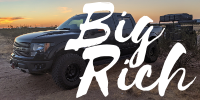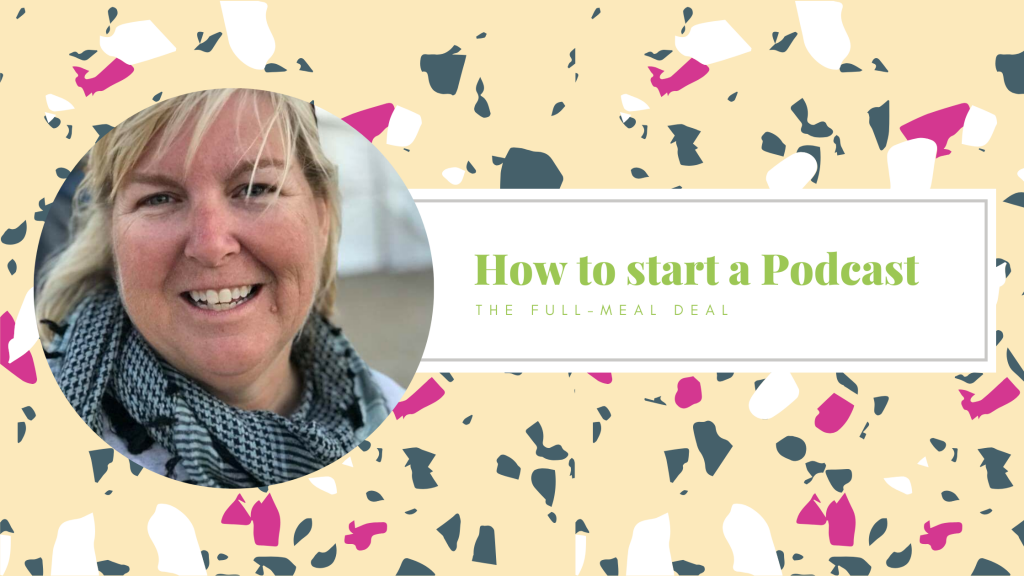Guest post by Shelley Krehbiel
There are affiliate links in this post, what that means to you is that if you click on a link, I may earn a commission for referring you to a company I have a relationship with, at no-cost to you. To avoid that, you can always Google the company name and go straight there, sometimes affiliate links include a bonus to the buyer as well, if you Google it, you may miss out on that bonus.
What’s your Why?
The first question to answer is Why? I say that because, along the way, you’re going to discover that podcasting is time-consuming and hard, not hard like engineering hard, but time-consuming hard. The same as blogging, you’ll wonder why you are spending the time and energy and try to figure out if you should continue. So answer your Why first so you can refer back to that when you are starting to flounder.
My why always begins with: I want to serve my community. If what you plan to offer doesn’t serve others, I’m probably not the girl to lead you through the process. It’s too easy nowadays to do things because YOU want to be the center of attention, YOU want to be an “influencer,” YOU want people to know who you are, YOU want to make a name for yourself. Ugh, I’m so tired of that attitude. No one cares, do it for the right reasons or stay home.
It’s relatively easy to start stuff, it’s harder to keep it going. So let’s cut the fluff and at least get you started.
Getting Started
Here’s the meat and potatoes – the full meal deal – you need to get started.
- Define your niche – not because you can’t speak to multiples – but because, you need to be sure you can target them. The more defined you are, the easier it is to target. You want to talk about Instant Pot cooking, you better know where to find your fellow Instapotters. You want to talk about WWE wrestling, you better know where to find the fans. You want to talk about mindset in entrepreneurs – good luck finding those folks.
- Define your format – are you doing a solo show, an interview show, a partnered show. Figure out what serves your audience best and do that.
- Ok, so maybe there are some technical pieces you still need (Keep reading, I’ll get there.) but, really, if you don’t Start now, you will still be thinking about this months from now. Start before you are ready. Start before you talk yourself out of it. Start so you have a baseline to improve on.
Perfection is not the goal, progress is.
It really is that simple. Once you’ve started, you can adjust. If you’re doing an interview show and the first couple sucked, you can re-record. Tell your guest you had technical difficulties and begin again.
Here are the steps we began with:
- Our niche, off-road enthusiasts with an interest in the history of their sport. We were lucky, this is an industry we’ve been a part of for twenty years. We already have an audience.
- Our format, guest interviews of those who have impacted the sport. From promoters and competitors to enthusiasts and manufacturers. We have a current list of 174 people to interview, at one per week, we’ve established that our longevity is at least three years out.
- Our start. Two interviews were done in November, with no follow-up. With time on our hands, thanks COVID-19, interviews began in earnest the following April. After the first interviews, we realized we needed a pillar episode to set the tone. We did that interview style as well.
Actually getting it done –
Those matched the first three listed above – but how, how do you actually get it all done? Here’s how.
- Interview on Zoom, Squadcast, or Zencastr, these are the most popular. We chose Zoom for two reasons – we were already using it to conduct calls with friends and there is a video component to the interview. (We aren’t using the video component yet, but we intend to.) We figured, why not set ourselves up to also produce YouTube content by getting the video piece done at the same time.
- Edit the interviews. Yes, you could just post up the interview without editing, but User Experience should be part of your plan. Editing to take out the hmm’s and ugh’s, the repeated words, the interruptions, the time lags while your guest is thinking of the answer. Shorten the time, you don’t want to waste the time of your listener. We use Adobe Premiere Pro and Adobe Audition to edit the interviews. Again, because we already have the Adobe Suite for other parts of our businesses, it makes sense to use what we have. Other recommended software is Audacity and GarageBand.
- Sign up for Buzzsprout to host your podcast. There are other platforms, all are comparable in price and plans. Others you could use are Lisbyn, Podbean, and SoundCloud. We’re happy with Buzzsprout. The website is simple and intuitive.
- Create your podcast cover art in Canva. The size should be 3000 x 3000 pixel. Keep it simple, put the name on it, maybe a picture, avoid the use of a microphone or soundwave, just get it done.
- Upload your first episode to your host. Go ahead and publish it. Don’t tell anybody, just get it uploaded and published – there is more work to do once that is done.
- Create your Transcription. We knew this was something we wanted, but weren’t really sure why, turns out a number of people will read or follow along with the transcription because of various disabilities. The transcription helps them to understand what they are hearing, or to “listen” if they are deaf. Be sure you edit your transcription, especially if you have a lot of proper names or acronyms in it. I promise, it doesn’t matter what software transcribed it, it won’t be right. I use Designnr to do this, the basic plan comes with six hours of transcription per month.
- Create your Show Notes. Tell people why they want to listen. Tell them why your guest is interesting, give them a timestamp and a hook. Always create Show Notes. This is also where you put your guests’ websites and contact info, if appropriate. I like this as bullet points.
- Create your promotional material. This could be in pictures, in soundbites, in video links. Decide how you are going to promote your show.
- Does it have its own Facebook page?
- Do you have a website?
- Instagram? Twitter? You know the drill, decide what you can do and do that.
- Add your show to all of the player directories. Apple, Stitcher, Spotify, and the likes. If you use a site like Buzzsprout, you just have to click through all the links and do the work. It’s not nothing, but it’s also not hard. Don’t skip any, this part is all free and you have no idea where your audience is listening from.
- Create a list of all the places you can be found. Then publicize that for your guests. Create a Pinned Post on your FB page where people can go to find them.
- Post up your second and third episodes. (see #5 above)
- This is where you tell people. Everyone you can think of, and you do it repeatedly because you won’t reach everyone the first time. Keep telling them.
- Release your fourth episode. The repeat steps #5 through #8 – week in and week out.
Find the best way to communicate with your guests that your episode released, you want them to promote to their audience, that’s how you build yours. Create a sign-up page with an email provider like Aweber or Constant Contact. Keep building. Keep working.
TL;DR
Things you should know.
- The editing process will take 3 to 4 times the length of the initial interview.
- Editing the transcription will take another 3 to 4 times the length of the initial interview.
- You’ll spend more time on social media posts and creating extra content than you planned on.
- If you don’t have a minimum of ten hours an episode available (assuming you are recording for an hour) in your schedule (or money to throw at it,) you probably won’t be able to sustain a reasonable release schedule.
- Set up your checklist, your action stack of things to do for each episode. Automate the process as much as you can with templates.
- You’ll get it wrong. Sometime in the beginning, you’ll have to do something more than once because you screwed up. That’s ok, it’s part of the process.
- Download stats are just gold stars for doing something you were going to do anyway. Don’t focus on downloads except to plan your marketing and incremental growth. Remember, you are here to serve your community.
At 25 downloads, you’ve presented to a classroom. At 200, to a hotel convention room, at 400 to an auditorium. It may not feel like anyone is listening, that’s ok, do it anyway.
Resource List – ✔ indicates products we use
Interview Software – pick one
Zoom✔
Editing software – pick one
Adobe Premier Pro or Audition✔
Podcast Hosts – pick one
Transcription
Cover Art
Email provider – pick one

